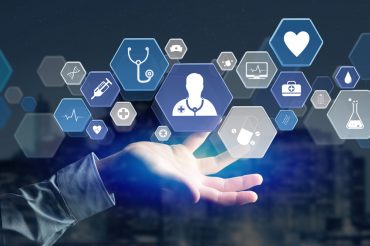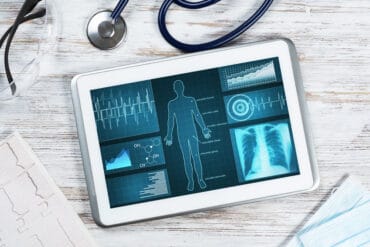
An urgent call to action that optimizes patient experiences and how edge computing can help.
It was late on a Friday evening in the third trimester of my pregnancy when I felt a strange heaviness in my heart. With my doctor’s office closed and unable to triage over the phone, the on-call nurse sent me to the emergency room (ER) for what turned out to be the longest night of my life.
After registering, I spent four hours in the waiting room and another four hours in the treatment room undergoing a series of tests and awaiting the results. With one test result coming back in an abnormal range, the urgent care team consulted with the obstetrics team on another floor for two more hours. I then weighed the pros and cons of their recommendations and decided not to take the risk of additional diagnostic imaging.
On early Saturday morning, after a sleepless, stressful night, I walked out of the ER without a conclusive diagnosis or treatment plan. Later that day, I got a call from my doctor saying my test results were considered normal during pregnancy.
As someone working in the IT industry, I wondered how technology could have been used to improve my emergency room experience and the experience of the healthcare staff.
The anatomy of a better healthcare experience
As it turns out, a better healthcare experience can be enabled at the edge. Dell Technologies defines the edge as “where data is acted on near the point of creation to create immediate, essential value.” Unlike centralized cloud computing, edge computing offers near-real-time insights while reducing concerns such as latency, availability, privacy, and unpredictable costs.
You can probably think of many healthcare “edges” — such as doctors’ offices, ambulances, and even hospital rooms — where nearby edge computers generate insights. My focus here is on remote monitoring and patient care facility capabilities and how data could be transferred and correlated across all patient touchpoints to reduce the burden on patients and healthcare providers.
From possible to actual…it all happens at the edge
| My experience | The edge-enabled experience |
| Lack of real-time monitoring leads to reactive care where the patient notices an issue and calls the specialist.Lack of virtual triage leads a specialist to send the patient to the ER.Lack of data access leads to information being repeated at every checkpoint.Lack of data correlation and access/sharing between different healthcare providers leads to longer waits and more testing. | Real-time remote monitoring from a wearable device alerts specialists of a patient’s issue. Specialist initiates virtual health meeting to check in with a patient. Edge system at the specialist’s office correlates real-time data with historical patient records to enable fast triage.If the specialist recommends a visit to the ER, full access to correlated data at the ER edge reduces the burden on intake staff and enables coordinated care for more relevant and timely testing. |
| Outcomes | |
| Patient experiences a long stay in the ER and delayed — possibly unnecessary — care. Hospital and staff spend time and incur costs treating a patient who may not need to be in the ER. | Patient benefits from a reduced chance of being sent to the ER. If an ER visit is recommended, the patient will receive faster, more accurate care. Hospital and staff streamline operations to provide better, faster care and free staff time and budget for more critical patients. |

To make the vision of the edge-enabled healthcare experience a reality, it’s crucial for healthcare providers to have the capability to process data at the edge. Moving IT infrastructure closer to the point of data creation and consumption allows faster processing and analysis of historical data combined with data streaming in from monitoring wearables and on-site sensors and devices.
With human well-being on the line, technology can catalyze better outcomes. There are hundreds of healthcare use cases that can benefit from near-real-time results at the edge. Healthcare cannot be thought of in isolation without security and data. More to come in future blogs.
Learn more about how edge computing can help your healthcare organization at dell.com/edge.
Natasha Guarav is a consultant for edge product management at Dell Technologies.







